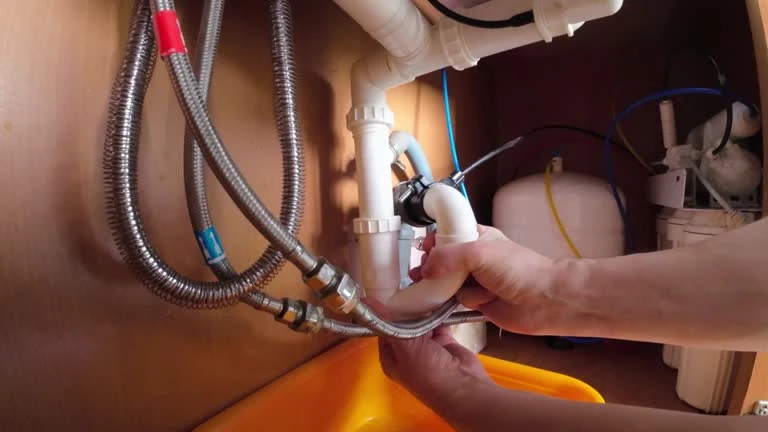Installing a washing machine inlet valve is a crucial step for ensuring a smooth and reliable water supply to your washing machine. An inlet valve regulates the water flow into the washing machine drum, allowing it to fill with water during the wash cycle. If the valve is damaged or malfunctioning, it can cause water leakage, poor washing performance, or even damage the appliance. This article will guide you through the process of installing a washing machine inlet valve, highlighting the tools, steps, and safety precautions involved.
Understanding the Washing Machine Inlet Valve
The washing machine inlet valve is a component that controls the flow of water from the household water supply into the washing machine. It is typically located at the back of the machine, where the hoses connect to the water supply. The valve operates electrically, opening and closing to allow water to flow when needed. Modern washing machines typically have two inlet valves – one for hot water and one for cold water – ensuring that you can adjust the water temperature for different washing cycles. Understanding the role of the inlet valve is essential for the installation process, as it directly affects the machine’s functionality.
Tools and Materials Needed for Installation
Before starting the installation process, gather all the necessary tools and materials. Here is a list of the items you’ll need:
- Adjustable wrench or pipe wrench
- Screwdriver (flathead and Phillips)
- Replacement inlet valve (compatible with your washing machine model)
- Teflon tape
- Bucket or towel (for catching any remaining water)
- Plumber’s tape or pipe joint compound (optional)
Having these tools ready ensures a smooth and efficient installation. Make sure the replacement inlet valve is designed for your washing machine model to avoid compatibility issues.
Preparing the Area for Installation
Before you begin installing the new valve, it’s essential to prepare the area. First, disconnect the washing machine from the power supply by unplugging it. Next, turn off both the hot and cold water supply valves to the machine. These valves are typically located near the wall, behind the washer. To prevent water from spilling, place a bucket or towel under the hoses to catch any remaining water in the lines. You may also want to place a towel or rag around the valve connections to protect the surrounding area from any water drips during the installation.
Disconnecting the Old Inlet Valve
With the area prepared, it’s time to disconnect the old inlet valve. Start by loosening the screws that hold the valve in place. Depending on your washing machine model, the valve may be secured with screws or bolts. Use a screwdriver or wrench to remove these fasteners. Once the valve is loose, disconnect the water supply hoses. These hoses are typically attached to the valve with a nut that can be removed using an adjustable wrench. Be sure to note the connection types and how the hoses are connected to ensure you install the new valve correctly.
Installing the New Inlet Valve
Now that you have removed the old valve, it’s time to install the new one. Start by aligning the new valve with the hose connections, ensuring that it is positioned correctly. Attach the cold and hot water supply hoses to their respective inlets on the new valve. When connecting the hoses, wrap Teflon tape around the threads of the valve connections to ensure a tight seal and prevent leaks. Tighten the hose connections with the adjustable wrench, but be careful not to overtighten, as this can cause damage to the valve or hose.
Next, secure the new valve in place by tightening the screws or bolts. Make sure the valve is securely attached to the washing machine’s body, ensuring that it will not move or shift during operation. Double-check the hose connections to make sure they are properly attached and sealed.
Testing the New Valve
After installing the new inlet valve, it’s time to test its functionality. First, turn on the hot and cold water supply valves to allow water to flow into the washing machine. Check for any leaks around the valve and hose connections. If you notice any water dripping, tighten the connections slightly. Make sure the valve is functioning correctly by turning on the washing machine and running a short cycle. Observe the water filling the drum to ensure that the valve opens and closes properly. If the valve does not operate correctly, double-check the installation and ensure that the electrical connections are in place.
Final Steps and Clean-Up
Once the installation and testing are complete, finalize the setup by cleaning up the area. Ensure that all tools and materials are removed from the vicinity of the washing machine. Check the hoses and valve connections one last time for any signs of leaks before pushing the washing machine back into position. You can now plug the machine back into the power supply. Run a full wash cycle to confirm that everything is working as expected. The machine should fill with water as needed, and there should be no leaks around the inlet valve or hose connections.
Troubleshooting Common Installation Issues
While installing a washing machine inlet valve is a straightforward process, you may encounter some common issues. If you notice water leaking from the valve or hoses, check the connections to ensure they are properly tightened. If the valve is not opening or closing properly, there may be an issue with the electrical connection. In this case, check the wiring and ensure that the valve is correctly connected to the machine’s control system. If the new valve continues to malfunction, it may be defective, and you should contact the manufacturer for a replacement.
Conclusion
Installing a washing machine inlet valve is a simple but essential task that ensures your washing machine operates effectively and efficiently. By following the proper steps and using the right tools, you can easily replace a faulty valve and restore your washing machine’s water supply functionality. Always make sure to turn off the power and water supply before beginning the installation, and take necessary precautions to avoid leaks. Regular maintenance of your washing machine’s inlet valve, such as checking for leaks and ensuring proper operation, will extend the life of the appliance and improve washing performance.
IFAN Products international standards
IFAN products strictly adhere to a comprehensive range of international standards, encompassing ISO 15874, EN 15874, ASTM F2389, DIN 8077/8078, GB/T 18742, NBR 15884, ISO 15494, EN ISO 15494, GB/T 19472, NBR 15494, ASTM 2846 (501), DIN 8079/8080 (502), ASTM F441/F441M SCH80 (503), DIN (504), DIN (505), GB/T 18993, AS/NZS 1477, CSA B137.6, NSF/ANSI 14, TIS 17-2532/1131-2535, BS 3505, BS 4346 (801), ASTM D1785 SCH40 (802), ASTM D1785 SCH80 (803), DIN (804), GB (805), GB (806), GB(901), DWV(902), ASTM D2665 (903), along with ASTM D2241, D2665, D2729, and F441/F441M series, ISO 1452, EN ISO 1452, DIN 8061/8062, GB/T 10002, AS/NZS 1477, JIS K6741, CSA B137.3, and other national and industry norms.
Connect
IFAN is a Chinese manufacturer of plastic pipes, fittings and valves with 30 years of experience. If you are interest in IFAN copper fittings, copper valves, plastic pipes and fittings, please contact us. IFAN offers you a variety of standard pipes to meet your specific needs. Click below to learn more about IFAN’s wide range of affordable and cost-effective valve products and piping system related products.
We will reply your email or fax within 24 hours.
You can call us at any time if there is any question on our production.
For more information,pls visit our webside https://waterpipefitting.com/
Pls Mailto: [email protected]
Whatsapp: +8615088288323














Recent Comments